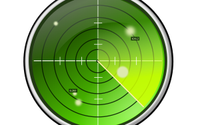 By Chuck Martin
By Chuck Martin
Beacons are hardly the biggest thing in the Internet of Things but they continually are one of the most talked about.
Part of this is because they’re being tried in so many places, from retailers to office buildings and homes.
U.S. regulators this week even approved beacons to be used by iRobot for its robot lawn mower. In that case, beacons will be used to help automatically direct the lawnmower where to cut grass.
Many thousands of beacons have been in stores for the last year, primarily being tested to see what does and doesn’t work and what resonates with shoppers.
And well over a million beacons have been shipped to various entities around the globe, some of which will be used for yet-to-be-conceived reasons.
Even if many beacons are never used to trigger mobile advertising of any sort, they still can be used to collect data to provide behavioral insights.
One of the key value propositions in beacons is likely to be in the aggregate data collection rather than in push messaging. For example, using beacons to identify and consumer shopping patterns can help determine store design and flow as well as product display.
On the other side of beaconing, those who opt-in for messaging are likely to be more active and loyal shoppers, so that part of the beacon coin can’t be discounted.
Using beacons for push messaging and data collections is going is going to be a two-way street for the foreseeable future.










